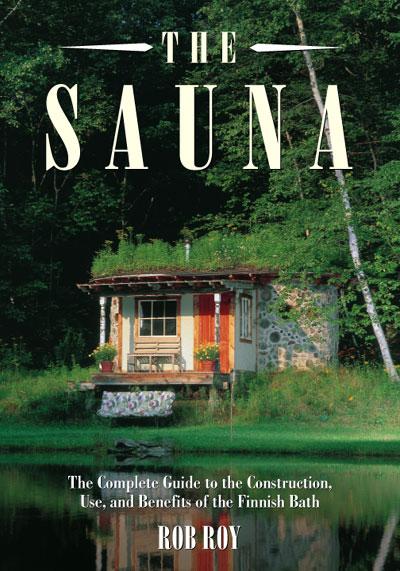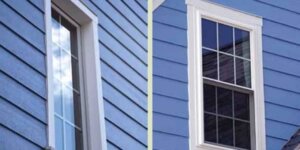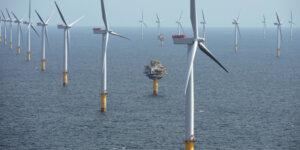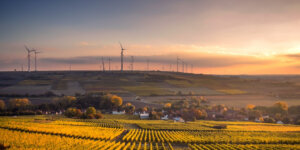US Leads World in Wind Production (Sort of): A Green Milestone
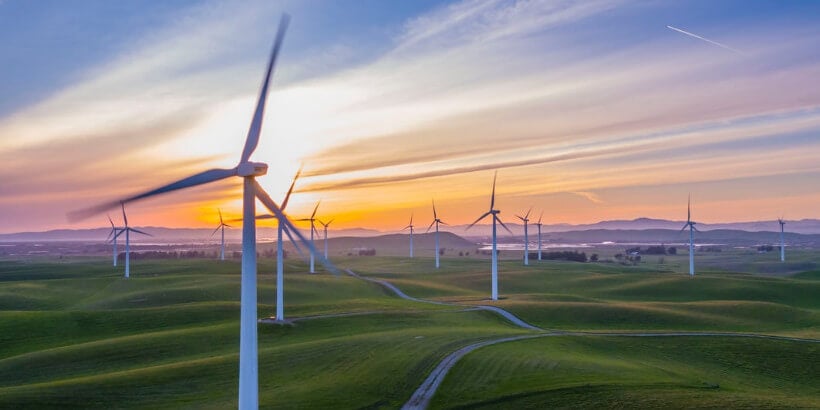
The US has just passed a significant milestone: according to the Global Wind energy Council (h/t EcoGeek), last year the US overtook Germany to become, for the first time, the leader in wind power capacity.
Of course, the US isn’t the only country increasing its wind power. Worldwide, according to Steve Sawyer, Secretary General of GWEC, “The 120 GW of global wind capacity in place at the end of 2008 will produce 260 TWh and save 158 million tons of CO2 every year.” 120 gigawatts…if I remember my Back to the Future science correctly, that’s the equivalent of harnessing about 10 bolts of lightning, sufficient for 5 round-trips through the spacetime continuum. Great Scott!
As I said, this is an important milestone. But we still have a long way to go. Being the largest producer of wind energy is far from being the world leader in wind energy per capita. And by that criteria, the actual biggest producer of wind power is Denmark.
The following is an excerpt from The Citizen-Powered Energy Handbook: Community Solutions to a Global Crisis by Greg Pahl. It has been edited for the Web.
DENMARK: A COOPERATIVE EFFORT
Although a number of different mechanisms to develop community wind projects have been used in Europe, they all require the participants to work together to achieve their common goal. This strategy is regularly employed in northern Europe for a wide variety of purposes, but especially in Denmark. Cooperative wind development has been a natural outgrowth of Danish cultural and agricultural interests. Around 1980, the Danish parliament provided incentives for wind cooperatives to encourage individual action toward meeting the nation’s energy and environmental policies. This program enabled virtually any household to help generate electricity with wind energy without necessitating the installation of a wind turbine in their own backyard. There were three key components to the Danish wind initiative:
- The right of wind power developers to connect to the electrical grid
- The legal requirement that utilities purchase the wind-powered electricity, and
- A guaranteed fair price.
As part of the legal requirements, the wind generator pays for the cost of connection to the nearest acceptable point on the grid, while the grid operator pays for any additional expenses required for grid upgrades and other improvements. These requirements removed one of the biggest hurdles to developing the wind industry in Denmark. As a result, the entire windpower initiative was spectacularly successful, and the idea caught on in Germany and the Netherlands as well.
Here’s how the strategy worked. Danish law encouraged mutual ownership of wind turbines by exempting the owners from taxes on the portion of the wind generation that offset a household’s domestic electricity consumption. 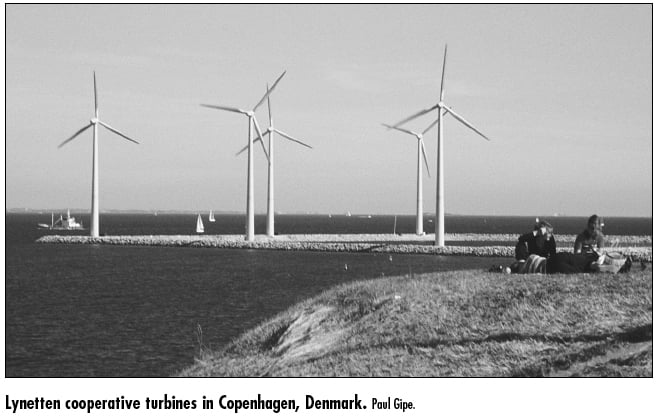 A wind co-op would then purchase a wind turbine, select the best site available, sell electricity to the electric utility under favorable terms, and share the revenues among its members. This enabled the group to buy the most cost-effective turbine available, even though it may have generated far more electricity than individual co-op members needed for themselves. Although, technically speaking, many of these cooperative ventures were set up as limited liability companies owing to the vagaries of Danish law and tax policies, the cooperative nature of the organizations was clear. The Lynetten cooperative (Lynetten Vindkraft I/S) that owns four out of the seven prominent, 600-kilowatt wind turbines on a breakwater within Copenhagen’s port is a good example of the success of the cooperative wind strategy in Denmark.16With over nine hundred members, the cooperative is one of the larger wind co-ops in the world.
A wind co-op would then purchase a wind turbine, select the best site available, sell electricity to the electric utility under favorable terms, and share the revenues among its members. This enabled the group to buy the most cost-effective turbine available, even though it may have generated far more electricity than individual co-op members needed for themselves. Although, technically speaking, many of these cooperative ventures were set up as limited liability companies owing to the vagaries of Danish law and tax policies, the cooperative nature of the organizations was clear. The Lynetten cooperative (Lynetten Vindkraft I/S) that owns four out of the seven prominent, 600-kilowatt wind turbines on a breakwater within Copenhagen’s port is a good example of the success of the cooperative wind strategy in Denmark.16With over nine hundred members, the cooperative is one of the larger wind co-ops in the world.
Middelgrunden
But perhaps the most famous Danish cooperative of all is Middelgrunden, which in March 2001 was the world’s largest offshore wind farm and is still one of the largest that is cooperatively owned. Located on a shoal about 2 kilometers outside of Copenhagen harbor, the Middelgrunden wind farm consists of twenty Bonus Energy 2-megawatt wind turbines with a hub height of 64 meters (210 feet) and a rotor diameter of 76 meters (250 feet). The twenty turbines are installed in a gentle arc with a total wind farm length of 3.4 kilometers (2 miles) and a combined generating capacity of 40 megawatts. Ten of the turbines are owned by the Middelgrunden Wind Cooperative, while the remaining ten are owned by Copenhagen Energy, the local municipal electric company. The joint relationship between the cooperative and the electric company proved to be extremely helpful throughout the planning, approval, and construction phases of the project, and provides an excellent model for North American wind initiatives as well.
The Bonus 2-megawatt units are specially designed for the harsh maritime climate in which they operate with high-grade external paint; hermetically sealed machinery; and a self-contained, internal climate-control system. The surface of the fiberglass blades is similar to fiberglass boat hulls and consequently requires no additional corrosion protection.17 A built-in crane is used for turbine maintenance. The status of the turbines and their output is monitored and regulated by an advanced, computerized control system, and the power from the wind farm is carried via an underwater cable to the mainland.18 Performance of the turbines is also publicly posted on the co-op’s Web site (www.middelgrund.com). The turbines were preassembled on shore in three parts before being floated to the concrete foundations (which were also built on shore and towed into place) and erected by a barge-mounted crane.
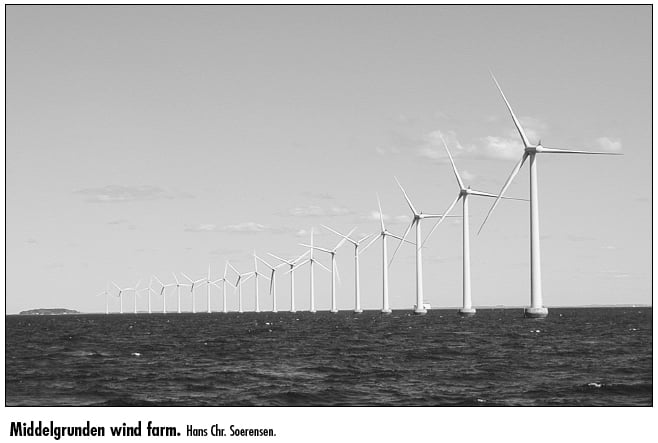
The original idea for the wind farm was conceived in 1993. The partnership was founded in May 1997 by the Working Group for Wind Turbines on Middelgrunden, with the goal of establishing and managing a wind farm on the Middelgrunden shoal. Partners own a share in the venture corresponding to 1/40,500 of the partnership per share purchased.19 Organizers believe that the project would not have been built without the public support generated by early public involvement in the planning process and local ownership. Despite numerous obstacles, the cooperative sold 40,500 shares for €570 ($678) each, a price set as low as possible to encourage broad participation. The total investment budget for the co-op was €23 million ($27 million). All together, about 8,500 investors bought shares.20 The projected payback time on the investment was estimated at eight years, with a rate of return of 7.5 percent after depreciation. Despite some initial technical problems, overall the wind farm has performed well and met or exceeded electrical-generation projections, providing enough electricity for more than 40,000 households in Copenhagen.
Recommended Reads
Recent Articles
Looking for a new way to enjoy the benefits of your garden all year long? Follow this easy tutorial for making drying trays to expand the lifespan of fruits, vegetables, and herbs. The following is an excerpt from Preserving Food Without Freezing or Canning by The Gardeners & Farmers of Terre Vivante. It has been adapted for…
Read MoreGetting ready to pile on the blankets this winter? Warm up your home and increase efficiency this winter by weatherproofing or replacing your windows! The following is an excerpt from The Greened Hour Effect by Jeff Wilson. It has been adapted for the web. Weatherproofing Windows for Winter Unfortunately, shopping for windows can be frustrating. The…
Read MoreThe new threshold for green building is not just low energy, it’s net-zero energy. In The New Net Zero, sustainable architect Bill Maclay charts the path for designers and builders interested in exploring green design’s new frontier net-zero-energy structures that produce as much energy as they consume and are carbon neutral. The following is an excerpt…
Read MoreScientists maintain that a mere 2 percent increase in the carbon content of the planet’s soils could offset 100 percent of all greenhouse gas emissions going into the atmosphere. But how could this be accomplished? What would it cost? Is it even possible? The following is an excerpt from Grass, Soil, Hope by Courtney White. It has been…
Read MoreAt the rate humanity is currently burning fossil fuels, we will create an uninhabitable earth long before we run out. So if the pressure of a finite resource doesn’t push us towards a renewable energy revolution, what will? And what will this revolution look like? This is an excerpt from A Small Farm Future by Chris…
Read More



